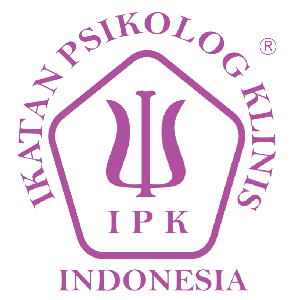Development of Resilience Measurement Tools in the Indonesian Cultural Context
DOI:
https://doi.org/10.26740/jptt.v15n03.p294-302Keywords:
Indonesian Culture, resilience, measurement toolsAbstract
Background: Resilience is defined as a personal quality that allows a person to thrive in the face of adversity and the ability to survive in overcoming stress. In Indonesia, research on resilience instruments has been conducted, but it is still limited to population samples and is still specific to academic resilience. Objective: This study aims to modify the resilience measurement tool with the cultural context in Indonesia, namely The Connor-Davidson Resilience Scale (CD-RISC) with its five dimensions of personal competence, spirituality, self-acceptance, self-control, and self-confidence. Method: This study uses quantitative methods, data analysis used is factorial analysis with Confirmatory Factor Analysis (CFA), Multiple Indicators Multiple Causes (MIMIC). Results: The Connor-Davidson Resilience Scale (CD-RISC) is a model fit resilience measurement tool according to the Indonesian context which consists of 23 items with participants of student groups with undergraduate & postgraduate education levels. Conclusion: This study successfully modified and simplified the resilience measurement tool, The Connor-Davidson Resilience Scale (CD-RISC) into a fit model of resilience measurement tools according to the Indonesian context.
References
Bond, T. G., Yan, Z., & Heene, M. (2021). Applying the rasch model fundamental measurement in the human sciences (4th ed.). Routledge
Brown, G. T. L., Harris, L. R., O’Quin, C., & Lane, K. E. (2015). Using multi-group confirmatory factor analysis to evaluate cross-cultural research: Identifying and understanding non-invariance. International Journal of Research and Method in Education, 40(1), 66-90. https://doi.org/10.1080/1743727X.2015.1070823
Brown, T. A. (2015). Confirmatory factor analysis for applied research. Guilford Publications.
Christensen, K. B., Makransky, G., & Horton, M. (2016). Critical values for yen’s identification of local dependence in the rasch model using residual correlations. Applied Psychological Measurement, 41(3), 178–194. https://doi.org/10.1177/0146621616677520
Cohen, R. J., & Swerdlik, M. E. (2018). Psychological testing and assessment: An introduction to tests and measurement (9th ed.). McGraw-Hill Education.
Connor, K. M., & Davidson, J. R. T. (2003). Development of a new resilience scale: The Connor-Davidson resilience scale (CD-RISC). Depression and Anxiety, 18, 76-82. https://doi.org/10.1002/da.10113
Gravetter, F. J., & Forzano, L.-A. B. (2012). Research methods for the behavioral sciences (4th ed). Cengage Learning.
Grotberg, H. (2003). Resilience for today: Gaining strength from adversity. Praeger Publishers.
Hair, J. F., Black, W. C., Babin, B. J., & Anderson, R. E. (2019). Multivariate data analysis (8th Ed.). Cengage Learning EMEA
Hardiansyah, H., Putri, A. P., Wibisono, M. D., Utami, D. S., & Diana, D. (2020). Penyusunan alat ukur resiliensi akademik. Psikostudia: Jurnal Psikologi, 9(3), 185-194. https://doi.org/10.30872/psikostudia.v9i3.3159
Jannah, M. (2018). Metodologi penelitian kuantitatif untuk psikologi. UNESA University Press.
Kim, H. Y. (2013). Statistical notes for clinical researchers: assessing normal distribution (2) using skewness and kurtosis. Restorative dentistry & endodontics, 38(1), 52. https://dx.doi.org/10.5395/rde.2013.38.1.52
Rahayu, W., Hayat, B., & Putra, M. D. K. (2024). Analisis Rasch: Aplikasi dan Interpretasi. UNJ Press.
Reivich, K., & Shatté, A. (2002). The resilience factor: 7 essential skills for overcoming life's inevitable obstacles. Broadway Books.
Saggino, A., Molinengo, G., Rogier, G., Garofalo, C., Loera, B., Tommasi, M., & Velotti, P. (2020). Improving the psychometric properties of the dissociative experiences scale (DES-II): A Rasch validation study. BMC Psychiatry, 20(1), 1–10. https://doi.org/10.1186/s12888-019-2417-8
Saleh, D., Camart, N., & Romo, L. (2017). Predictors of stress in college students. Frontiers in Psychology, 8(19). https://doi.org/10.3389/fpsyg.2017.00019
Schumaker, R. E., & Lomax, R. G. (2016). A beginner’s guide to structural equation modeling (4th ed). Routledge.
Shi, D., Maydeu-Olivares, A., & Rosseel, Y. (2020). Assessing fit in ordinal factor analysis models: SRMR vs. RMSEA. Structural Equation Modeling: A Multidisciplinary Journal, 27(1), 1–15. https://doi.org/10.1080/10705511.2019.1611434
Sintia, I., Pasarella, M. D., & Nohe, D. A. (2022, May). Perbandingan Tingkat Konsistensi Uji Distribusi Normalitas pada Kasus Tingkat Pengangguran di Jawa. In Prosiding Seminar Nasional Matematika dan Statistika (Vol. 2).
Smith, A. B., Cocks, K., Parry, D., & Taylor, M. (2016). A differential item functioning analysis of the EQ-5D in cancer. Value in Health, 19(8), 1063–1067. https://doi.org/10.1016/j.jval.2016.06.005
Wahyudi, A., Mahyuddin, M. J., Irawan, A. W., Silondae, D. P., Lestari, M., Bosco, F. H., & Kurniawan, S. J. (2020). Model rasch: Analisis skala resiliensi connor-davidson versi bahasa Indonesia. Jurnal Advice, 2(1), 28-35. https://www.researchgate.net/publication/347793419_model_rasch_analisis_skala_resiliensi_connor-davidson_versi_bahasa_indonesia
Wang, L., He, C. Z., & Yu, Y. M. (2014). Associations between impulsivity, aggression, and suicide in Chinese college students. BMC Public Health, 14, 551. https://doi.org/10.1186/1471-2458-14-551
Wu, Y., Yu, W., Wu, X., Wan, H., Wang, Y., & Lu, G. (2020). Psychological resilience and positive coping styles among Chinese undergraduate students: A cross-sectional study. BMC Psychology, 8, 1-11. https://doi.org/10.1186/s40359-020-00444-y
Downloads
Published
How to Cite
Issue
Section
License
Copyright (c) 2024 Viki Love Reformasianto

This work is licensed under a Creative Commons Attribution 4.0 International License.
Authors who publish in this journal agree to the following terms:
Copyright in any article is held by the author.
The author grants the journal, publication rights with the work simultaneously licensed under a Creative Commons Attribution License that allows others to share the work with an acknowledgment of the work's authorship and initial publication in this journal.
Authors may enter into separate, additional contractual arrangements for the non-exclusive distribution of the journal's published version of the work (e.g., posting it to an institutional repository or publishing it in a book), with an acknowledgment of its initial publication in this journal.
Authors are permitted and encouraged to post their work online (e.g., in an institutional repository or on their website) prior to and during the submission process, as this can lead to productive exchanges, as well as earlier and greater citation of published work.
 Abstract views: 1266
,
Abstract views: 1266
, PDF Downloads: 1396
PDF Downloads: 1396


















